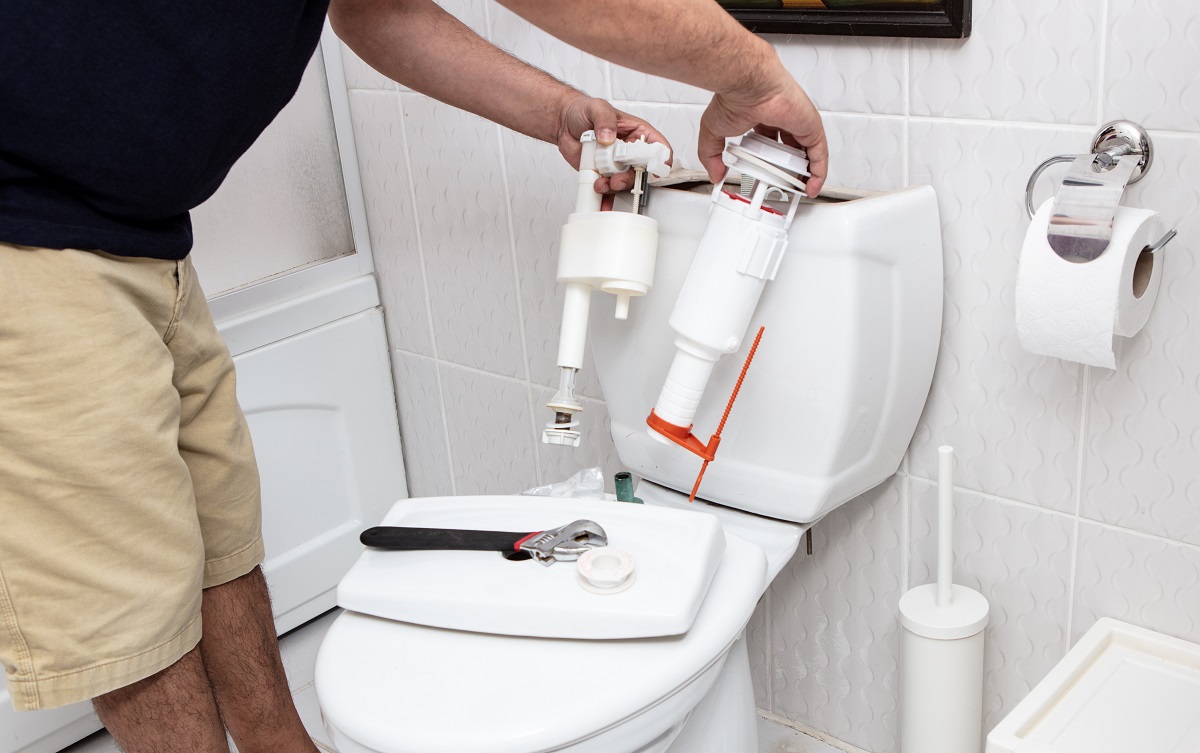Dealing with a malfunctioning toilet can be distressing, especially if you aren’t sure whether to tackle the issue yourself or call in a professional. Fortunately, many common toilet problems can be resolved with basic plumbing knowledge and a few essential tools. These insider tips from experienced plumbers will help you assess and potentially fix your toilet issues, saving you both time and money.
However, it’s important to recognize when a problem is beyond DIY repair. The following guide will walk you through several aspects of toilet repair, from simple adjustments to more complex replacements, helping you understand when it might be time When To Call a Plumber for Toilet Repairs.

Understanding Common Toilet Issues
Before you reach for your toolbox, it’s crucial to understand the most frequent toilet troubles. A constantly running toilet, for instance, might be due to a faulty flapper or an issue with the fill valve. In such cases, replacing these components can often resolve the problem. Learning how to diagnose these issues correctly can save you effort and resources. Make sure to When To Call a Plumber for Toilet Repairs before proceeding with any repairs.
Detecting leaks is another common challenge. Food coloring added to the tank can help reveal whether water is escaping into the bowl without flushing. If color appears in the bowl within 30 minutes, this indicates a leak usually due to an old or worn-out flapper that needs replacing.
Tools Needed for Basic Repairs
Having the right tools on hand is essential for effective toilet repairs. A few must-haves include a plunger, adjustable wrench, screwdriver, and perhaps a toilet auger for dealing with clogs deep in the drain. High-quality parts replacements are also vital; opting for cheap alternatives might save money upfront but can lead to more frequent failures down the line.
Keep your workspace organized and ensure all needed materials are accessible before starting your repair. This preparation reduces the likelihood of mistakes and makes the process smoother and quicker.
Steps to Replacing Toilet Components
To replace broken or worn parts such as flappers, fill valves, or toilet handles, first shut off the water supply and drain the tank completely. Subsequently, remove the old component and install the new one ensuring all connections are secure. Testing each updated part singly after installation helps isolate further issues if they continue.
The process may differ slightly depending on your toilet model, so reviewing specific instructions for your particular toilet ahead of these repairs is advised. Always double-check mechanisms after assembly to ascertain every new component functions correctly without leaks.
Troubleshooting Flushing Mechanisms
A weak flush might not need complete part replacement but could require cleaning mineral deposits from inlet holes or jet holes in your toilet bowl. Using an appropriate cleaner can enhance flush efficiency significantly without necessitating substantial replacements.
If cleaning doesn’t improve flushing power, adjusting or replacing the lift chain or handle might be necessary. Ensuring correct alignment and fit can often restore full functionality to your toilet’s flushing mechanism, making it operate like new.
When to Consult a Professional Plumber
While many toilet issues can be handled through DIY efforts, significant problems like major leaks, persistent clogs that resist all attempts at clearing, or concerns involving exterior plumbing connections should prompt you to seek professional help. Recognizing your limits not only ensures safety but also protects your home’s plumbing system from potential damage caused by incorrect repairs.
Specialist plumbers have tools and expertise unavailable to most homeowners which allow them to diagnose and rectify problems swiftly and effectively. Consulting one could save money long-term by preventing costly errors or unnecessary replacements.
In conclusion, understanding basic facets of toilet mechanics can empower you as a homeowner to maintain and repair minor issues quickly and economically. However, recognizing when to contact a professional is equally important as undertaking repairs yourself. Remembering these tips will keep your home’s facilities in optimal condition while avoiding undue costs and hassle.
Keep learning about home maintenance tasks through insightful guides like this one along with timely professional assessments when required — stay pragmatic about what you can handle versus what should be delegated!

